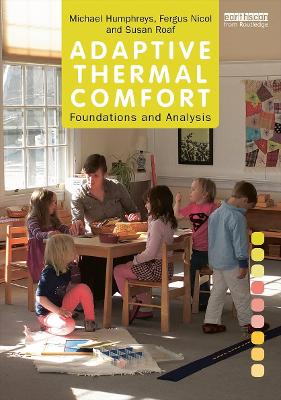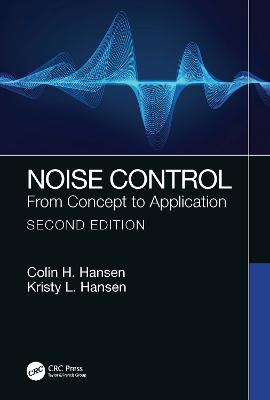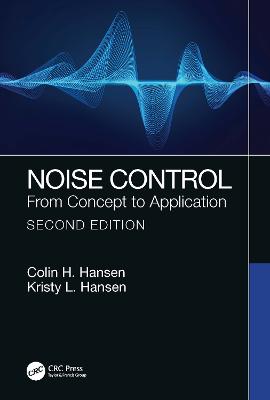Adaptive Thermal Comfort: Foundations and Analysis
 -10%
portes grátis
-10%
portes grátis
Adaptive Thermal Comfort: Foundations and Analysis
Humphreys, Michael; Nicol, Fergus; Roaf, Susan
Taylor & Francis Ltd
09/2015
400
Dura
Inglês
9780415691611
15 a 20 dias
839
Descrição não disponível.
Part I: Foundations 1. Introduction to adaptive behaviour 2. Adaptive Beginnings 3. The emergence of the adaptive point of view 4. Summertime Overheating in Schools 5. The first international conference on thermal comfort 6. Adapting to enforced changes of temperature 7. The First Meta-analysis 8. Clothing outdoors and during sleep 9. Meta-analysis 2: relating climate to indoor comfort 10. The origin of the Oxford Thermal Comfort Unit 11. Fieldwork in Pakistan 12. Raising awareness of the adaptive approach 13. Beginning fieldwork at Oxford Brookes University 14. PMV and the results of field studies 15. Adaptation and the ASHRAE RP-884 database 16. Going international: the SCATs project Part II: Analysis 17. Introducing part 2 18. Using the Method of Successive Categories to explore the properties of thermal comfort scales 19. Developing, adapting and testing thermal subjective scales 20. A Simple Heat Exchange Model for Thermal Comfort Conditions 21. Regression analysis: general features and effects of data-selection and binning 22. The effects of error in the predictor-variable 23. Mutual relation between room temperature and subjective warmth 24. The relation between regression analysis and probit analysis 25. The dependence of subjective warmth on within-day changes in room temperature 26. Constructing Bell-shaped Curves for Comfort and Temperature 27. Tolerance of seasonal drift of indoor temperature 28. Estimating Neutral Temperatures from Survey Data 29. The adaptive relation between indoor neutral temperatures and the outdoor climate 30. Do people like to feel neutral? Semantic offsets and zero-errors 31. Clothing and thermal behaviour 32. Interactions among environmental variables, adaptation and overall comfort 33. Drawing the threads together
Este título pertence ao(s) assunto(s) indicados(s). Para ver outros títulos clique no assunto desejado.
environment;clothing;insulation;indoor;temperature;subjective;warmth;outdoor;sensation;Young Men;vote;ASHRAE Scale;ASHRAE RP-844 Database;Average Thermal Sensation;ASHRAE Database;ASHRAE Transaction;Thermal Comfort;Seasonal Drifts;Thermal Comfort Field Study;Adaptive Thermal Comfort;ASHRAE RP-884;Subjective Warmth;Richard De Dear;Clothing Insulation;SCATs Database;Neutral Temperatures;Comfort Vote;Scatter Plot;Outdoor Temperature;Indoor Temperature;Residual Standard Deviation;Regression Gradient;Thermal Sensation;Bedford Scale;De Dear
Part I: Foundations 1. Introduction to adaptive behaviour 2. Adaptive Beginnings 3. The emergence of the adaptive point of view 4. Summertime Overheating in Schools 5. The first international conference on thermal comfort 6. Adapting to enforced changes of temperature 7. The First Meta-analysis 8. Clothing outdoors and during sleep 9. Meta-analysis 2: relating climate to indoor comfort 10. The origin of the Oxford Thermal Comfort Unit 11. Fieldwork in Pakistan 12. Raising awareness of the adaptive approach 13. Beginning fieldwork at Oxford Brookes University 14. PMV and the results of field studies 15. Adaptation and the ASHRAE RP-884 database 16. Going international: the SCATs project Part II: Analysis 17. Introducing part 2 18. Using the Method of Successive Categories to explore the properties of thermal comfort scales 19. Developing, adapting and testing thermal subjective scales 20. A Simple Heat Exchange Model for Thermal Comfort Conditions 21. Regression analysis: general features and effects of data-selection and binning 22. The effects of error in the predictor-variable 23. Mutual relation between room temperature and subjective warmth 24. The relation between regression analysis and probit analysis 25. The dependence of subjective warmth on within-day changes in room temperature 26. Constructing Bell-shaped Curves for Comfort and Temperature 27. Tolerance of seasonal drift of indoor temperature 28. Estimating Neutral Temperatures from Survey Data 29. The adaptive relation between indoor neutral temperatures and the outdoor climate 30. Do people like to feel neutral? Semantic offsets and zero-errors 31. Clothing and thermal behaviour 32. Interactions among environmental variables, adaptation and overall comfort 33. Drawing the threads together
Este título pertence ao(s) assunto(s) indicados(s). Para ver outros títulos clique no assunto desejado.
environment;clothing;insulation;indoor;temperature;subjective;warmth;outdoor;sensation;Young Men;vote;ASHRAE Scale;ASHRAE RP-844 Database;Average Thermal Sensation;ASHRAE Database;ASHRAE Transaction;Thermal Comfort;Seasonal Drifts;Thermal Comfort Field Study;Adaptive Thermal Comfort;ASHRAE RP-884;Subjective Warmth;Richard De Dear;Clothing Insulation;SCATs Database;Neutral Temperatures;Comfort Vote;Scatter Plot;Outdoor Temperature;Indoor Temperature;Residual Standard Deviation;Regression Gradient;Thermal Sensation;Bedford Scale;De Dear







